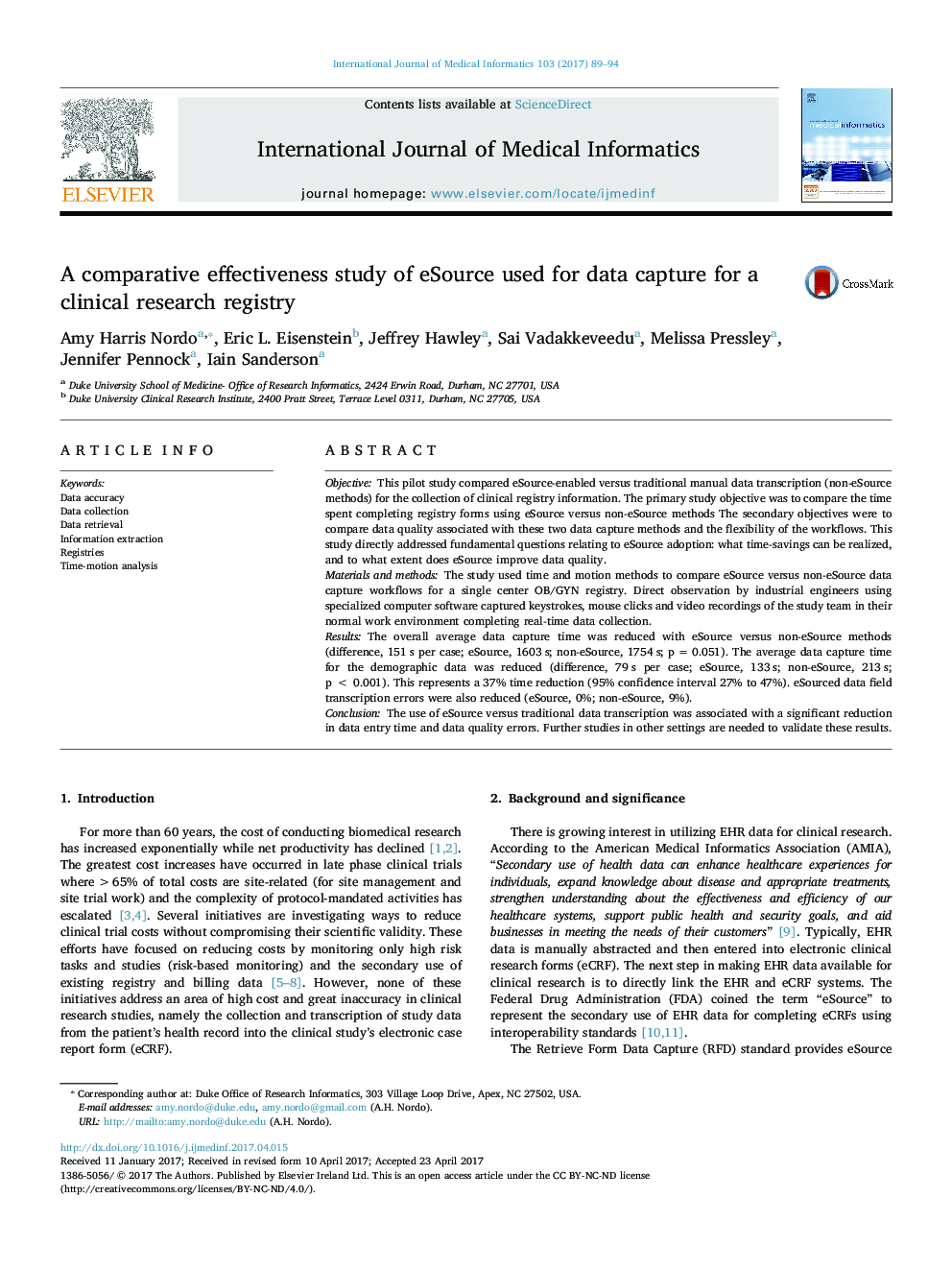| Article ID | Journal | Published Year | Pages | File Type |
|---|---|---|---|---|
| 4966594 | International Journal of Medical Informatics | 2017 | 6 Pages |
â¢eSource produced a 37% time savings.â¢eSource produced 0% data quality issues compared to a 9% error rate for manual transcription.â¢eSource workflows require one less full time employee
ObjectiveThis pilot study compared eSource-enabled versus traditional manual data transcription (non-eSource methods) for the collection of clinical registry information. The primary study objective was to compare the time spent completing registry forms using eSource versus non-eSource methods The secondary objectives were to compare data quality associated with these two data capture methods and the flexibility of the workflows. This study directly addressed fundamental questions relating to eSource adoption: what time-savings can be realized, and to what extent does eSource improve data quality.Materials and methodsThe study used time and motion methods to compare eSource versus non-eSource data capture workflows for a single center OB/GYN registry. Direct observation by industrial engineers using specialized computer software captured keystrokes, mouse clicks and video recordings of the study team in their normal work environment completing real-time data collection.ResultsThe overall average data capture time was reduced with eSource versus non-eSource methods (difference, 151 s per case; eSource, 1603 s; non-eSource, 1754 s; p = 0.051). The average data capture time for the demographic data was reduced (difference, 79 s per case; eSource, 133 s; non-eSource, 213 s; p < 0.001). This represents a 37% time reduction (95% confidence interval 27% to 47%). eSourced data field transcription errors were also reduced (eSource, 0%; non-eSource, 9%).ConclusionThe use of eSource versus traditional data transcription was associated with a significant reduction in data entry time and data quality errors. Further studies in other settings are needed to validate these results.
